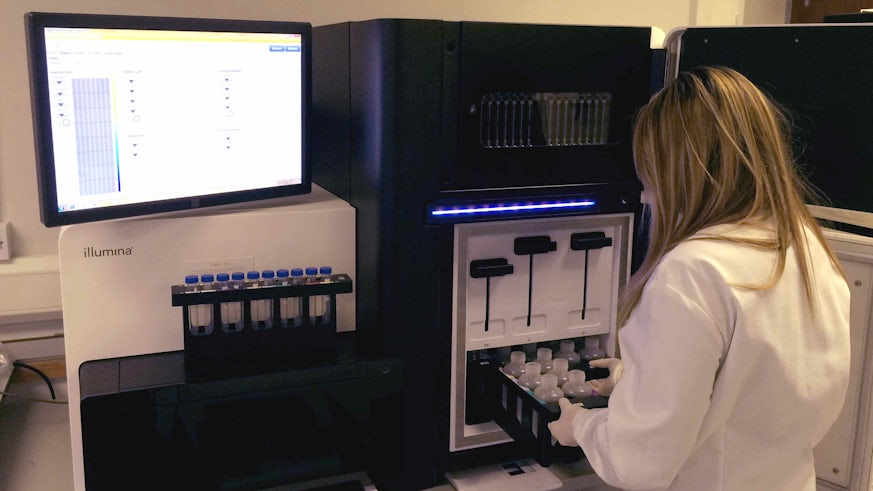Study reveals insights on timing of Huntington’s Disease onset
8 August 2019

New research results challenge an accepted theory about the timing of Huntington’s disease.
Huntington’s disease is an inherited and fatal disorder in which nerve cells in the brain break down over time. It can become evident at any time, but typically starts in a person’s thirties and forties.
The disease is caused by inheritance of an expanded DNA segment of repeated CAG nucleotides. The number of these CAG repeats can vary between different people, and on average, those with longer CAG repeats tend to experience symptoms earlier in life. This was previously thought to be a result of increasing toxicity of multiple glutamines, or polyglutamine, encoded by this CAG repeat in the DNA.
When scientists from the Genetic Modifiers of Huntington’s Disease Consortium analysed information on more than 9,000 individuals with the disease, they found that the timing of onset was due to a property of the expanded CAG repeat in an individual’s DNA and not due to the length of polyglutamine.
Analyses by Professor Peter Holmans, a principal investigator at Cardiff University’s MRC Centre for Neuropsychiatric Genetics and Genomics, found that multiple genes involved in DNA maintenance and repair can modify timing of Huntington’s disease onset, making it either earlier or later than expected based upon the length of the inherited CAG repeat. Furthermore, changes in the activity of some of these genes was associated with disease onset, giving potential routes to new therapies.
These results indicate that either the CAG repeat itself or the DNA maintenance processes that modify its expansion in neurons may be potential targets for treatments.
Professor Lesley Jones, also of the MRC Centre at Cardiff University, said, “A number of approaches are already being pursued to change the Huntington’s disease CAG repeat directly and to develop drugs that modulate DNA maintenance proteins”.
“This study shows that applying genetic analysis techniques to large samples assembled through international collaboration can revolutionise our understanding of the aetiology of diseases hitherto assumed to be caused by a single gene,” said Professor Holmans. “The next step will be to perform similar studies on other disorders caused by expanded repeats, such as the spinocerebellar ataxias, to see if the same mechanisms apply”.
The paper, Huntington’s disease onset is determined by length of uninterrupted CAG, not encoded polyglutamine, and is modified by DNA maintenance mechanisms is published in the journal Cell.
